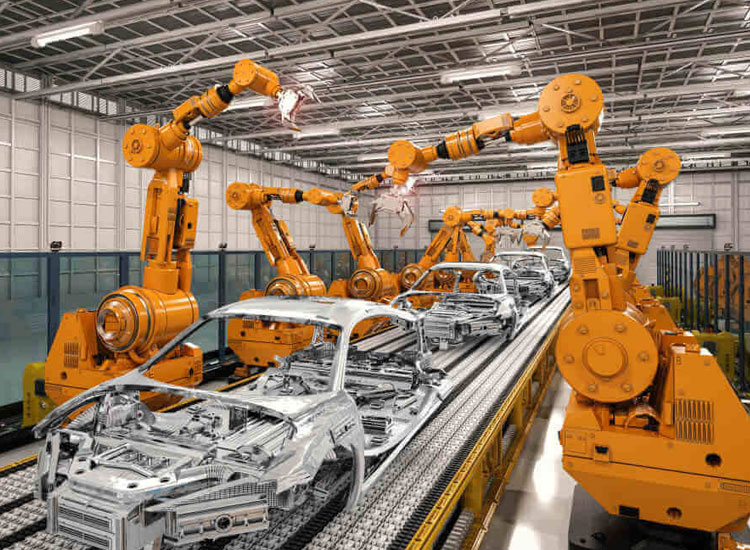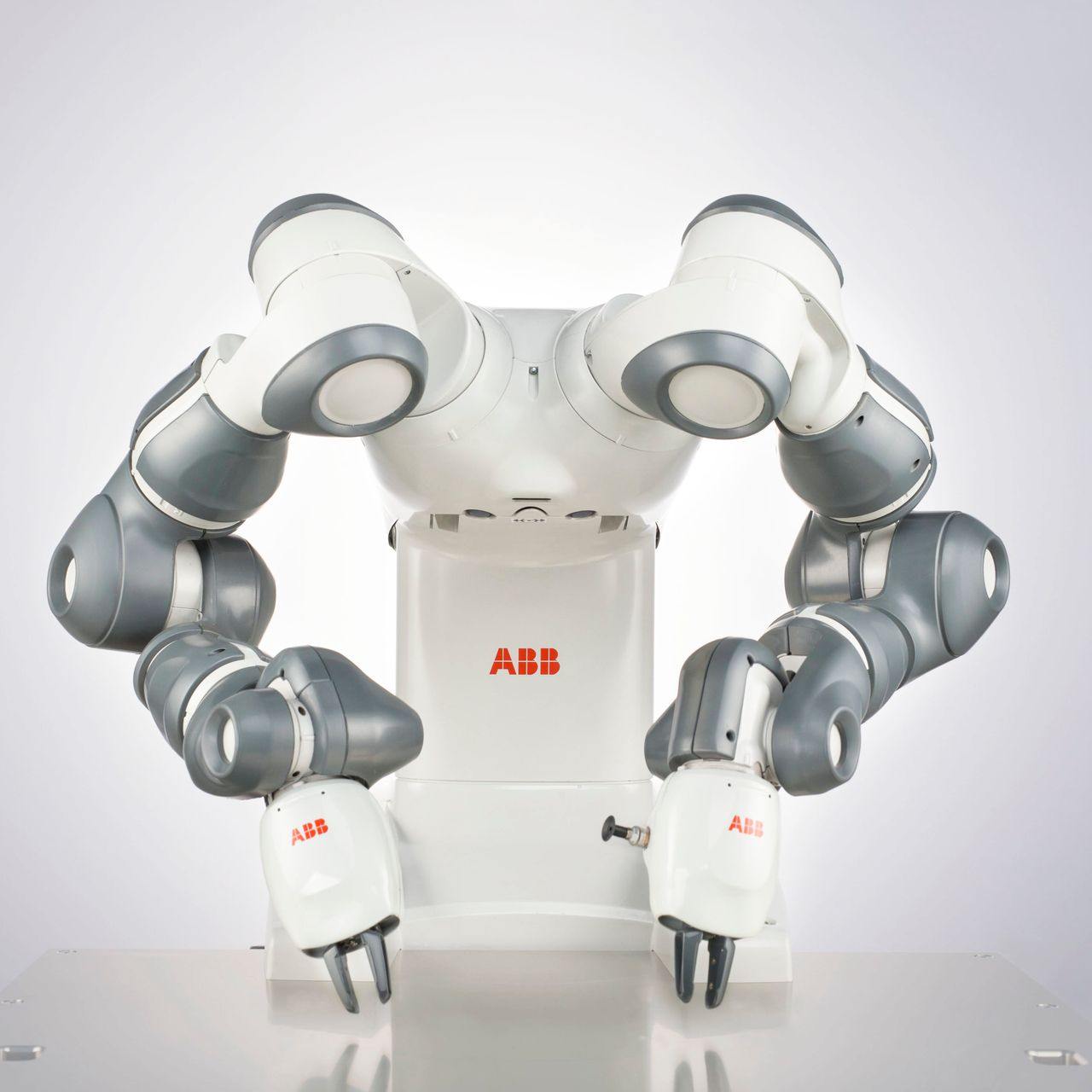The Future of Work: Investment Opportunities in Industrial Automation
Industrial automation is revolutionizing manufacturing, logistics, and even service sectors by integrating robotics, AI, and machine learning to streamline operations and boost productivity. Industrial automation offers companies worldwide a solution to optimize efficiency, reduce costs, and mitigate labor shortages and operational risks.
Why Industrial Automation?
Industrial automation is poised to become a trillion-dollar industry, driven by rapid technological advancements and the growing demand for efficiency in production processes. According to a report by Grand View Research, the global industrial automation market size was valued at $157 billion in 2022 and is expected to grow at a CAGR of 9.8% from 2023 to 2030.
Investment in industrial automation is on the rise. First, there is a critical need to enhance productivity while addressing labor shortages. As labor costs rise and the available workforce declines in key manufacturing regions like North America, Europe, and parts of Asia, companies are turning to automation to fill the gap.
Another driver is the push for efficiency and cost reduction. Automated systems can operate 24/7 without fatigue, significantly reducing downtime and human error. This translates to greater profitability for businesses across industries. A study by McKinsey highlights that adopting automation could improve labor productivity by 1.4% annually, a critical metric as companies strive to stay competitive globally .

Additionally, the rise of Industry 4.0 is transforming how companies approach manufacturing, logistics, and supply chain management. Industry 4.0 emphasizes the use of smart, interconnected systems through the Internet of Things (IoT), artificial intelligence (AI), and data analytics to optimize processes.
VCs are particularly interested in startups developing solutions at the intersection of robotics, AI, and machine learning, with the belief that these technologies will dominate the next industrial wave.
Fully Robotic Car Assembly Line
Who is Making Noise in the Industry?
Both startups and established players are capturing significant market attention. Among the most prominent is UiPath, a leader in robotic process automation (RPA). UiPath focuses on automating repetitive back-office tasks using AI and machine learning, streamlining workflows for industries ranging from healthcare to finance. Since its founding, UiPath has raised over $750 million and went public in 2021 with one of the largest software IPOs in history, and with a revenue of $1.30b in 2023.
ABB Robotics is another major player in the field, offering a wide range of industrial robots designed to handle everything from assembly and packaging to painting and welding. ABB has been a global leader in industrial robotics, serving industries such as automotive, electronics, and heavy manufacturing. Some notable customers of ABB include Nestle, Ford, Volkswagen, and Procter & Gamble. The company has been at the forefront of automation advancements and continues to develop AI-driven systems to enable faster and more flexible manufacturing processes. For example, ABB’s development of collaborative robots like YuMi and GoFa places it at the cutting edge of automation. These cobots are designed to work safely alongside humans without the need for safety cages, enabling more flexible manufacturing environments.
In the startup space, Bright Machines is pioneering the concept of “microfactories,” where AI-powered software and robotics are integrated to create fully automated production lines. Bright Machines has raised over $350 million in funding, with backing from investors like Eclipse Ventures and BMW i Ventures . Their modular automation approach allows manufacturers to easily scale and adjust production as needed, making it an attractive solution for modern factories.
Another standout is Vicarious, a robotics and AI company focused on creating general-purpose robots capable of performing a wide variety of tasks in manufacturing environments such as assembly and fabrication, material handling, and pick and place. Vicarious has raised over $250 million in funding from prominent investors such as Jeff Bezos and Elon Musk.

ABB Robotic Arms
What is Coming Next?
Cobots
The future of industrial automation is packed with promise. One of the more exciting developments on the horizon is cobots (collaborative robots), which are designed to work alongside humans rather than replace them. These robots are equipped with advanced sensors that measure force and torque, tactical sensors, infrared sensors, and more. This allows them to perform tasks like machine tending, packing, and material handling while enhancing human labor rather than replacing it. Companies like Universal Robots are leading the charge in this space, offering cobots that are easy to deploy and flexible in function.
AI / ML Integration
Another trend is the use of AI / ML to make industrial robots smarter and more adaptable. AI-driven robots can now learn new tasks with minimal human intervention, reducing setup times and increasing operational flexibility. For example, Covariant is working on AI systems that allow robots to autonomously handle highly variable objects in warehouses and distribution centers, this can include examples like mixed packaging or sorting manufacturing parts. Customers like retailers and e-commerce warehouses can benefit from the limited manual intervention as a result of these systems. In Covariant’s funding exceeds $150 million, positioning it as a leader in AI-powered robotics .
Digital Twin Technology
Advances in digital twin technology are expected to play a key role in the next phase of industrial automation. Digital twins—virtual replicas of physical assets—allow manufacturers to simulate production processes, predict maintenance needs, and optimize workflows before changes are implemented in real life. This could dramatically reduce downtime and equipment failure rates. An example of digital twin technology can be seen in General Electric’s (GE) use of digital twins for their jet engines and gas turbines. GE creates a virtual model, or “digital twin,” of each physical engine that they manufacture. This virtual model is continuously updated with data from sensors embedded in the physical engine, capturing real-time performance metrics such as temperature, pressure, and vibration. Companies like Siemens are heavily investing in this area, integrating digital twins with their industrial automation solutions.
Autonomous Mobile Robots (AMR)
Finally, the future will see further integration of autonomous mobile robots (AMRs), particularly in logistics and supply chain automation. Startups like Seegrid are innovating in this space, developing AMRs that can navigate dynamic environments, such as warehouses and manufacturing plants, without requiring any external infrastructure. Seegrid has secured over $150 million in funding to advance its autonomous vehicle technology .
Industrial automation is transforming global production and supply chain processes. Automation is becoming essential for businesses seeking to remain competitive and the sector presents significant investment opportunities. The key takeaway is clear: industrial automation is not just a trend but a critical driver of the future economy, making it an attractive space for forward-thinking capital deployment.
—————————————–
If you are a builder, investor or researcher in the space and would like to have a chat – please reach out to me at amit.k@thelotuscapital.com
